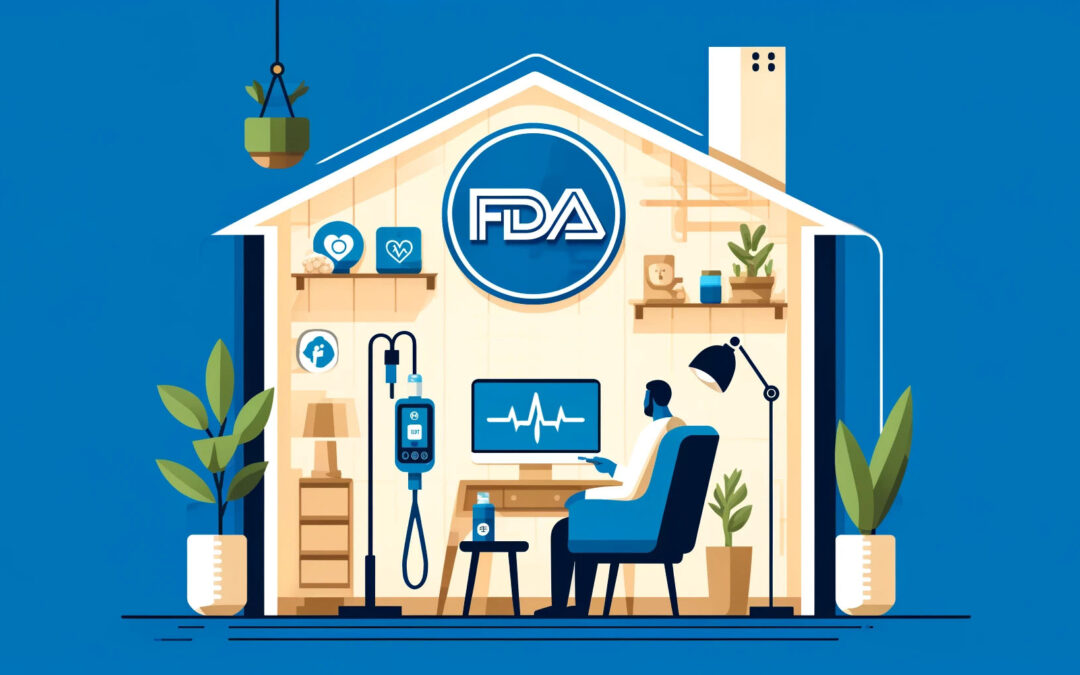To advance health equity, the FDA has launched the “Home as a Health Care Hub” initiative. This initiative aims to transform the traditional home into a primary setting for health care. This forward-thinking approach recognizes the evolving landscape of medical care, where accessibility and user-friendliness of home-based medical devices are crucial. Patients are more directly involved in managing their healthcare data with home-delivered healthcare. Since medical professionals won’t always be available to translate complex concepts, information must be easy to understand. This is where label comprehension and human factors studies of medical devices become critical. These studies ensure that users can understand and correctly use their medical devices, supporting the success of this innovative healthcare approach.
Context of FDA’s Initiative
The FDA’s “Home as a Health Care Hub” initiative represents a crucial shift towards making healthcare more adaptable and accessible. By focusing on the home as a viable healthcare hub, the initiative aims to reduce barriers that traditionally hinder access to medical services, especially for underserved populations. This approach emphasizes the importance of medical device innovation while highlighting the need for these devices to be easy to operate, easy to understand, and inclusive across different demographics.
Likely Standards Under the FDA’s Initiative
As the “Home as a Health Care Hub” initiative progresses, the FDA will likely establish standards focusing on the safety, effectiveness, and accessibility of home healthcare devices. These standards will include rigorous user comprehension requirements, ensuring all potential users can effectively operate the devices. While many of these standards may already exist, they will be repurposed and adapted for this innovative approach to home healthcare. Additionally, new standards may be developed to address the unique challenges of home-based care. These standards will also stress the importance of accessibility and inclusivity, catering to diverse user needs, including those with disabilities. Quality and safety protocols will be emphasized to ensure device reliability in home settings, advancing health equity and enhancing access for underserved communities.
Examples of where enhanced standards may come into play include:
- Remote monitoring compliance
- Environmental variability
- Self-administered and remotely delivered training
Importance of User Comprehension Studies
User comprehension studies are foundational in the context of home healthcare. As we explored in our previous blog post, “What is a Label Comprehension Study?“, these studies are designed to validate that all potential users can understand and follow a medical device’s instructions. This is not just a regulatory requirement but a critical step in ensuring patient safety and the effectiveness of treatments administered at home. Drawing from our discussions on “FDA User Comprehension Studies,” the rigor of these studies directly correlates to the success of implementing medical devices in home settings, thereby supporting the FDA’s health equity goals.
Integrating Label Comprehension and Human Factors in Home Healthcare
As home healthcare expands, the importance of label comprehension and medical device human factors becomes even more critical. The FDA’s “Home as a Health Care Hub” initiative must ensure that medical devices are not only secure and private but also designed with clear labels and user-friendly interfaces. By focusing on these elements, we can prevent unauthorized access by non-patients and enhance the overall safety and effectiveness of home-based healthcare solutions. Ensuring robust label comprehension and considering human factors in design will support the initiative’s goal of advancing health equity and improving patient outcomes.
Where User Comprehension Has Helped Before
Consider the impact of well-executed user comprehension studies in deploying diagnostic tools like those for genetic testing, as detailed in our post, “Designing DTC Genetic Test Reports.” These reports are designed to be easy to understand without a provider’s help, empowering users to make informed health decisions directly from their homes—something that seemed like science fiction just a decade ago. Such examples highlight the potential of comprehensive user studies, including human factors and self-selection studies in addition to user comprehension and label comprehension studies, to enhance the usability and accessibility of advanced medical technologies in domestic environments.
For Equity, We Must Consider Comprehension Across Literacy Levels
A critical aspect emphasized in the FDA’s “Home as a Health Care Hub” initiative is ensuring that healthcare devices are comprehensible for users of all literacy levels, especially in settings where provider guidance is limited. Comprehension studies must ensure that educational and literacy backgrounds are considered in recruitment, with sufficient numbers to identify literacy-related comprehension problems. These studies aim to solve issues that may continue to obstruct equity preemptively.
Addressing literacy variations is essential for patient safety and treatment effectiveness. Resources such as Boston University’s Health Literacy Tool Shed and insights on health literacy from the CDC underscore the importance of clear health communication. Incorporating these considerations into user comprehension studies not only supports health equity but also ensures the usability of home-based medical devices for everyone.
Considering the Future
The FDA’s “Home as a Health Care Hub” initiative underscores the importance of the home as a safe setting to meet healthcare needs, especially for remote and underserved populations. User comprehension studies play a pivotal role in this evolution. By ensuring that medical devices are user-friendly and accessible, we can make significant strides in advancing health equity. For those involved in developing medical devices, integrating robust user comprehension studies is not just beneficial—it’s essential.
At SoundRocket, we’ve pondered an important question:
As home healthcare expands, how should the FDA and device manufacturers address the potential for unauthorized access to medical devices by non-patients, such as friends and family members?
Any thoughts? Stay tuned to our blog—we may tackle that question in a future post.
Schedule a call with one of our user comprehension experts today to learn more.

